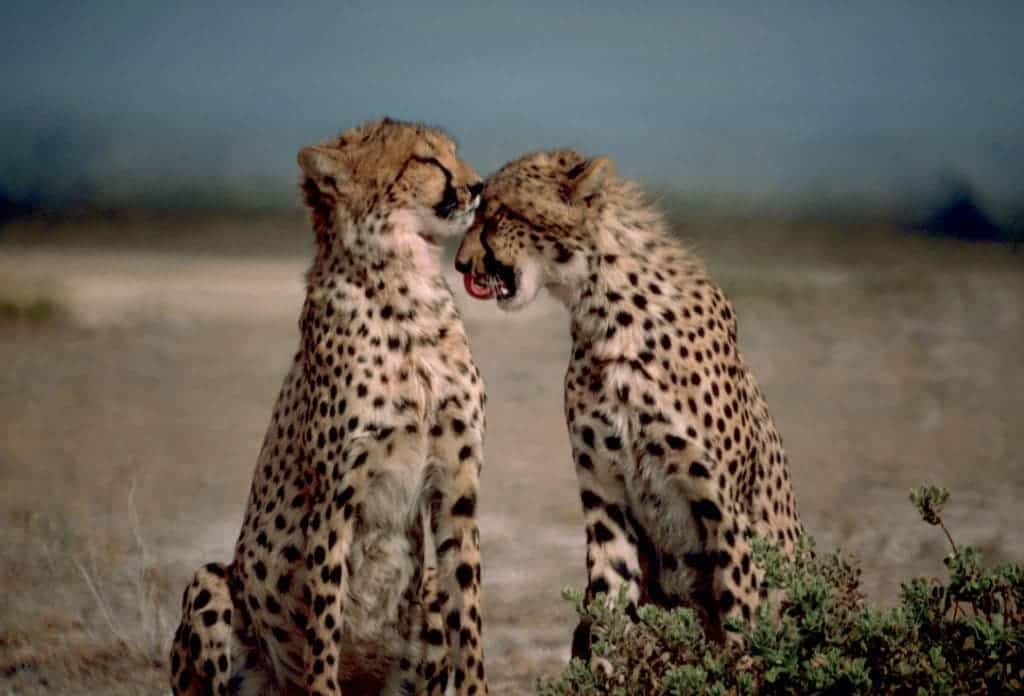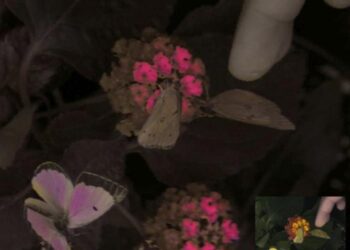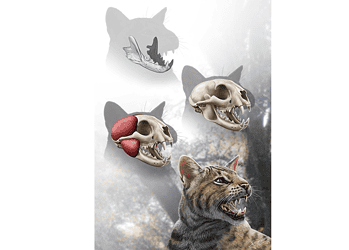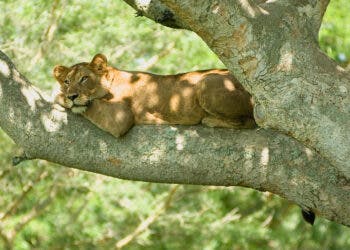It’s bad news for one of the most iconic creatures on Earth: a comprehensive assessment of cheetah populations reveals that the big cats’ numbers have decreased dramatically. Researchers now want to list the fastest land animal as “endangered” on the International Union for Conservation of Nature (IUCN) Red List.

An international team led by Florian Weise of the Claws Conservancy and Varsha Vijay of Duke University, working with National Geographic Society’s Big Cats Initiative, analyzed more than two million collared cheetah observations as well as 20,000 observations from both the research community and the general public. They concluded that across 789,700 square kilometers in Namibia, Botswana, South Africa, and Zimbabwe, a prime area for cheetahs, only 3,577 adults remain. They believe this justifies changing the classification of the animals from Vulnerable to Endangered.
“This collaborative, multiyear effort sounds the alarm about the state of cheetah populations in southern Africa, shining a light on the imperative need to protect these majestic predators,” said Gary E. Knell, President and CEO, National Geographic Society.
“The National Geographic Society is proud to support such a comprehensive assessment and similar efforts aimed at safeguarding our most precious species, their habitats and the planet we call home.”
The area they studied isn’t the only one to host cheetahs, but it does host the largest free-roaming population on Earth. In other, more remote areas, the paper believes 3,250 cheetahs still roam. Together, that’s less than 8,000 individuals, which is disturbing and not nearly enough for a healthy population.
“Around the world, big cats are suffering big losses and having big trouble in more and more human-dominated landscapes,” says study co-lead author Florian Weise of the Massachusetts-based conservation group Claws Conservancy.
The only encouraging news from this study comes from the methodology. The fact that researchers were able to incorporate so many observations, both from a professional setting and from the general public, could enable us to better understand big cat populations, which are struggling in most parts of the world.
“We have a larger degree of certainty in the lower estimate because it is based on those areas where we have recorded estimates of cheetahs,” says study co-lead author Varsha Vijay, who specialises in geospatial analysis for The Pimm Group at Duke University.
“There is greater uncertainty in the higher estimate because it assumes the very optimistic scenario that all the areas we identified as potential cheetah habitat are occupied by cheetahs at similar densities to the areas with confirmed cheetah presence,” Vijay says.

But for the cheetahs, things don’t really look so good. Humans have altered around 90% of their historic habitat, and with cheetahs having ranges of tens to hundreds of square kilometers, cornering them in can have devastating consequences. In prehistoric times, the cheetah was distributed throughout Asia, Africa, and Europe. Gradually, they vanished from Europe and started to retreat more and more in the face of an expanding humankind. Nearly 500 years ago, the cheetah was still common throughout Africa, with an estimated range of 25,344,648 km2 (9,785,623 sq mi). As of 2015, their range has decreased by 89%. Nowadays, cheetahs exist mostly in eastern and southern Africa, with only fragmented, isolated populations in Iran, Afghanistan, and India. People are repurposing the land cheetahs used to prowl for agriculture. Farmers won’t hesitate to kill cheetahs, which they see as a threat to livestock. Cheetahs are also sometimes hit by cars and poached. This sum of threats might just be too much for the cheetahs to handle.
The IUCN Red List is the world’s most comprehensive inventory of the global conservation status of biological species. IUCN is the main authority on animal conservation, with both animals and plants potentially included on the list as Vulnerable, Endangered, and Critically Endangered. An endangered species is a species which has been categorized as very likely to become extinct. Generally speaking, the IUCN will move a species from Vulnerable to Endangered if there’s a decline in 50 to 70 percent of the population over 10 years or three generations (whichever is longer). But even if they are reclassified, this might not improve things significantly. Just 18.4 percent of the southern African cheetah range lies within protected lands. Farmers will still continue to change the land according to their needs, they will continue to shoot cheetahs on site, and poachers will continue to poach. That’s where action needs to be taken if we want future generations to grow up in a world with emblematic big cats.
“The future of the cheetah relies heavily on working with farmers who host these big cats on their lands, bearing the heaviest cost of coexistence,” concludes Weise.
The study was published in the journal PeerJ.






